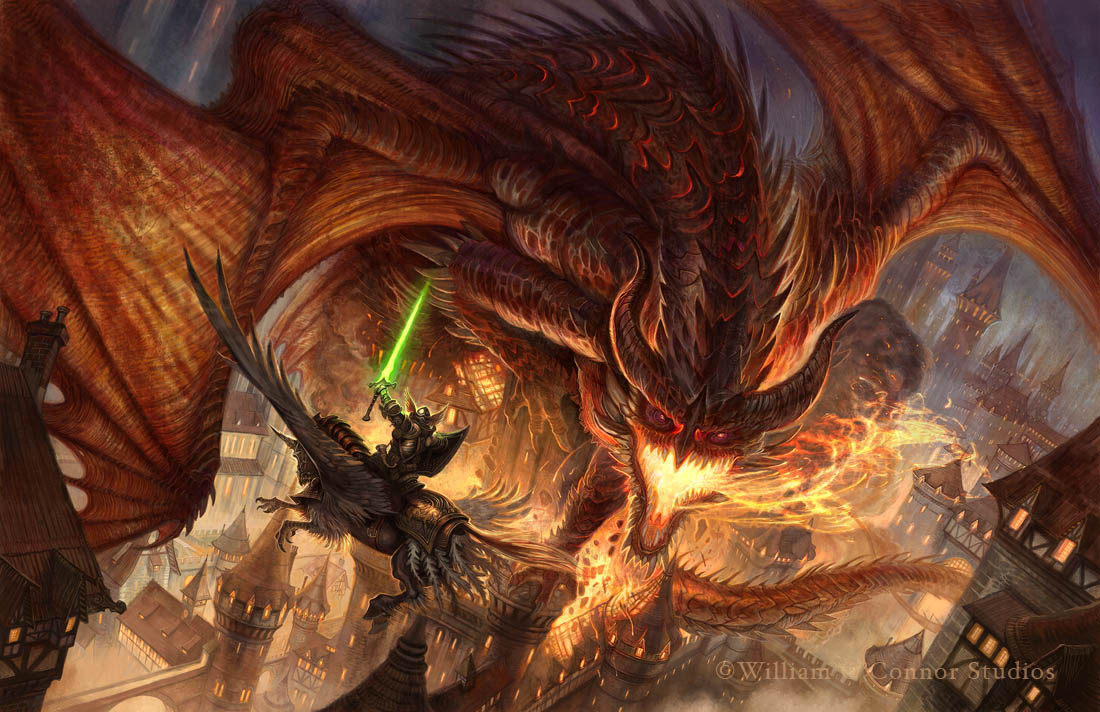 |
| ‘Flight of the Paladin’, by William O’Connor, ©2012 |
The most iconic image in all of fantasy art is the dragon. Powerful, ancient and beautiful it has for millennia captivated the minds of artists, writers and story tellers. But many of us may not know the origins of this terrific beast. I therefore present this brief history to illustrate the history of this mythological creature that has possessed out imaginations for so long.
The legend of dragons is as old as civilization itself, but where does this mythology come from? The birth of the idea of dragons (and all mythical beasts) around the world is fairly obvious. With the invention of mining for precious metals and quarrying of stone for building ( ca. 8000 bc.) it is likely that these ancients discovered the fossilized remains of dinosaurs and prehistoric animals just as we do. With an understanding of animal anatomy it would be easy for them to piece together the creatures, and imagine their appearance. The difference however these people would not understand that the animals were extinct. Legends would be built around these exotic, giant, unknown animals and the mythology of giant lizards was born.
In ancient Mesopotamia (ca. 5000 bc.) the creation myth is built around a dragon named Tiamat. This great beast of heaven is slain by Marduk, and cast into the sea making the world.
Dragons continue to populate the classical mythologies of ancient Greece and Rome, but the form of these creatures is varied. Hercules slays a dragon in one of his twelve labors, Jason subdues the dragon that is guarding the Golden Fleece, and Apollo slays a great serpent named Python. All of these monsters fall into the category of dragons, but there depiction in art is by no means standardized. The dragon is simply a generic giant lizard.
Not until the fall of the Roman Empire and the Rise of Christendom does the dragon in western civilization begin to take on the familiar form we know today in bestiaries and myths. It is perhaps the story of Adam and Eve in the old testament and the appearance of Satan in the form of a serpent that first transfixes the medieval imagination. For nearly a thousand years, the dragon represents evil and becomes synonymous with demons. The dragon is also used by medieval knights emblazoned on their shields and standards to strike fear into the hearts of their enemies. Throughout the epics and romantic stories of this period dragons show up to be slain by the virtuous heroes of folklore, legend and religion.
In the epic of Beowulf (ca. 1000 ad.) the great Scandinavian king slays a monstrous fire-breathing dragon and dies in its arms.
Icelandic tales in the Volsungasaga (ca. 1250 ad.) transforms the dwarf prince Fafnir into a dragon to be slain by Seigfried.
The Welsh Epic of The Mabinogion (ca. 1400ad.) depicts the great Red Dragon of Wales battling a White Dragon and causing earthquakes.
In the Christian faith Satan routinely appears a dragon to tempt the saints. The Golden Legend (ca. 1200 ad.) illustrates St. George and St. Margaret as well as several other saints, confronted by dragons.
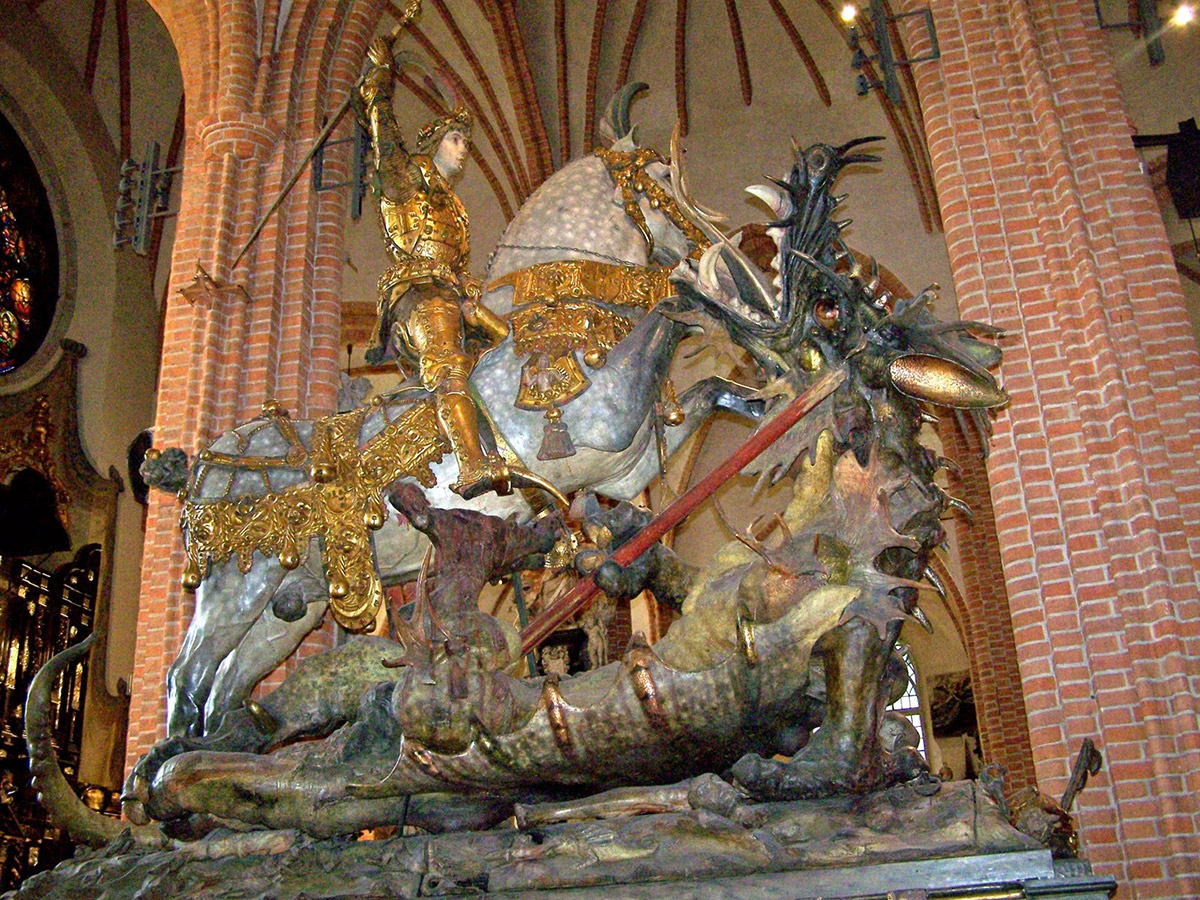 |
| ‘St. George and the Dragon’, by Bernt Notke, 1489 (Stockholm Cathedral) |
By 1500 ad. the mystical apex of catholicism combined with the ever-increasing craft of the visual artists finds the archetypal fire-breathing dragon in its full splendor. This is well documented when Edmund Spencer describes his titanic monster in The Fairie Queene. (1590 ad.)
Excerpt: Book One: Canto Eleven
“By this the dreadfull Beast drew nigh to hand,
Halfe flying, and halfe footing in his hast,
That with his largenesse measured much land,
And made wide shadow vnder his huge wast;
As mountaine doth the valley ouercast.
Approching nigh, he reared high afore
His body monstrous, horrible, and vast,
Which to increase his wondrous greatnesse more,
Was swolne with wrath, & poyson, & with bloudy gore.
And ouer, all with brasen scales was armd,
Like plated coate of steele, so couched neare,
That nought mote perce, ne might his corse be harmd
With dint of sword, nor push of pointed speare;
Which as an Eagle, seeing pray appeare,
His aery plumes doth rouze, full rudely dight,
So shaked he, that horrour was to heare,
For as the clashing of an Armour bright,
Such noyse his rouzed scales did send vnto the knight.
His flaggy wings when forth he did display,
Were like two sayles, in which the hollow wynd
Is gathered full, and worketh speedy way:
And eke the pennes, that did his pineons bynd,
Were like mayne-yards, with flying canuas lynd,
With which whenas him list the ayre to beat,
And there by force vnwonted passage find,
The cloudes before him fled for terrour great,
And all the heauens stood still amazed with his threat.”
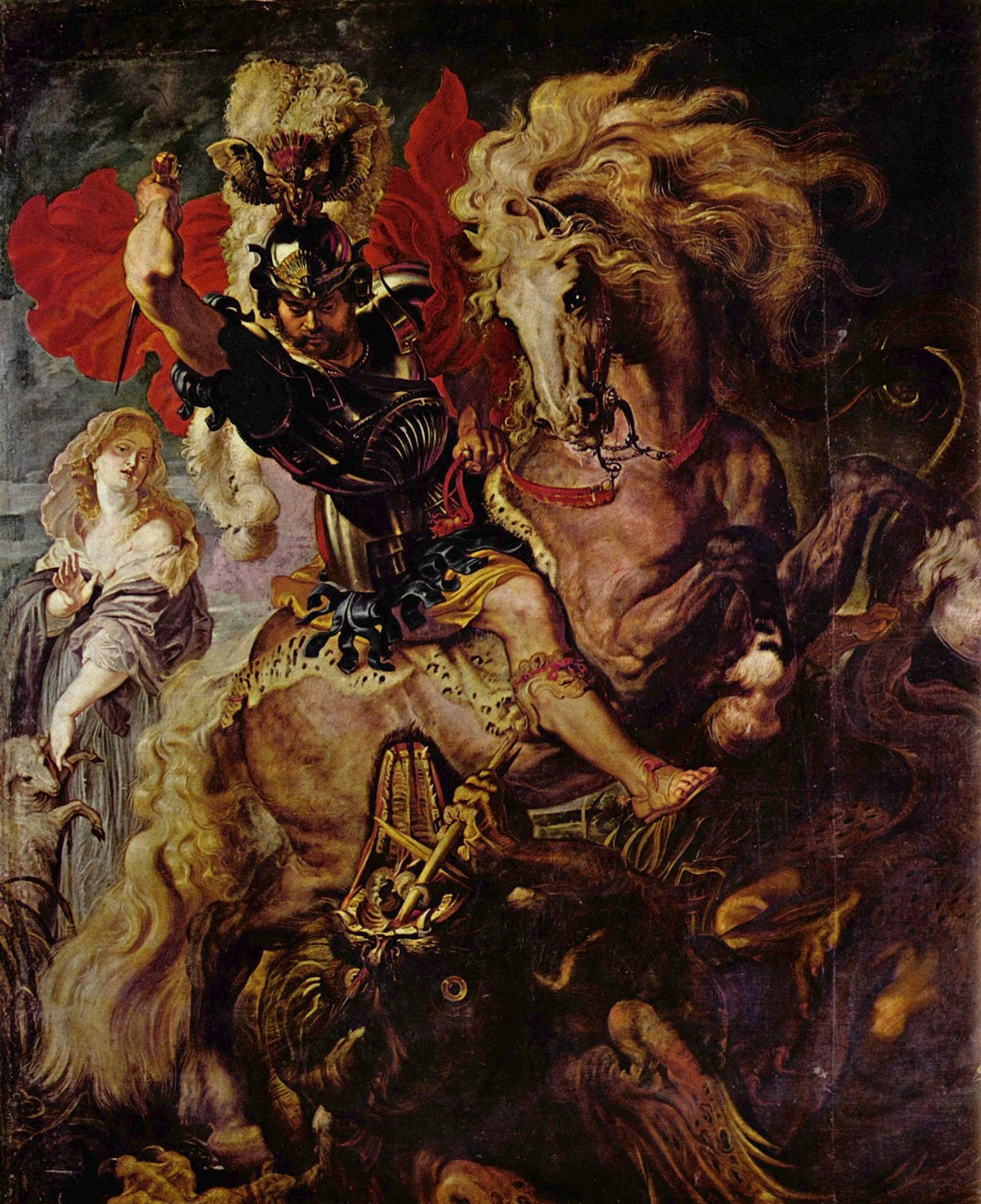 |
| ‘St. George and the Dragon’, by Peter Paul Ruebens, 1606 |
After the Protestant Reformation and the advent of the Age of Reason the dragon becomes more a creature of entertainment rather than of spiritual belief. Protestant artists are prohibited from depicting scenes from the bible and the stories of the saints are abandoned as idolatry. Dragons and other beasts take on a decorative nature, and as subjects of classical illustration. During this period it is the first evidence that the dragon is being treated as a fantasy creature.
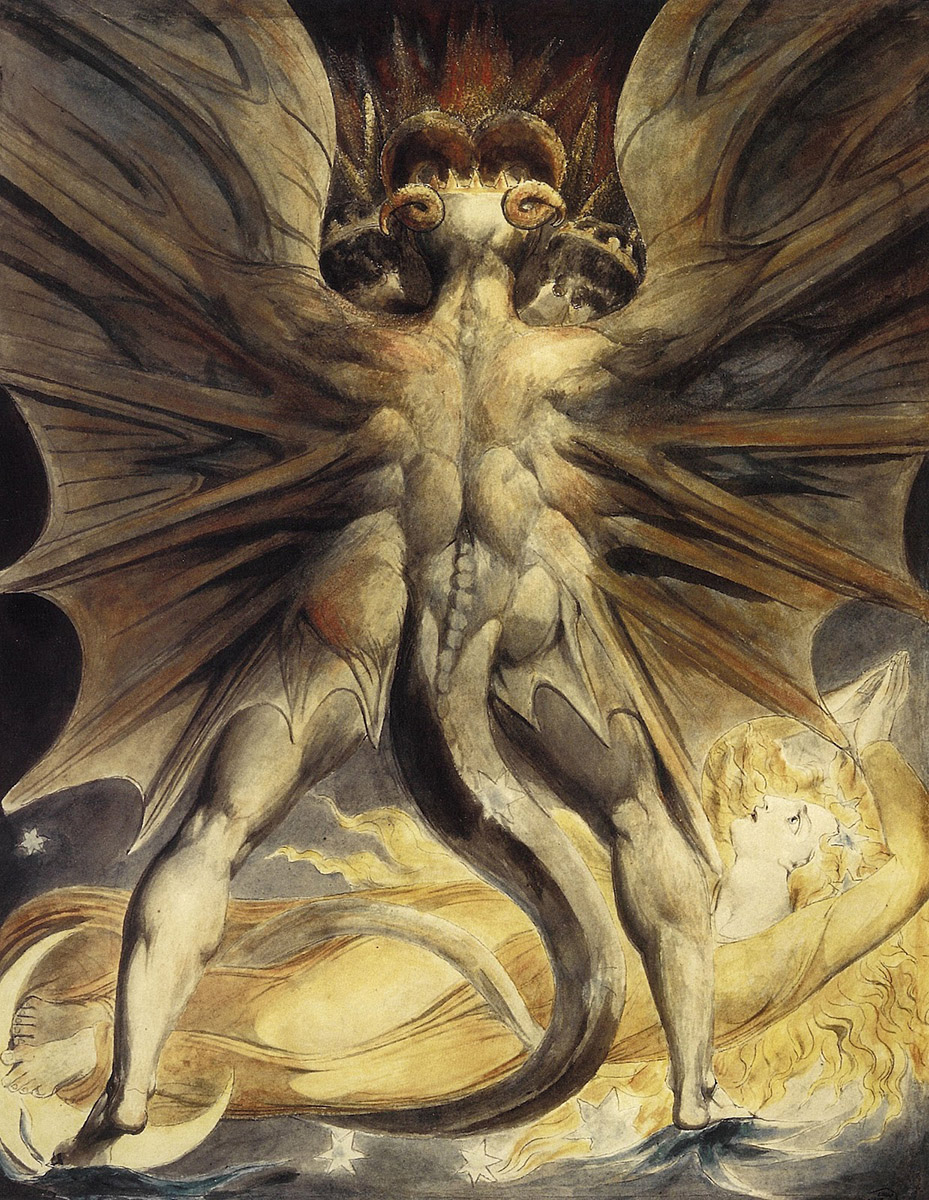 |
| ‘The Great Red Dragon and the Woman Clothed in Sun’, by William Blake |
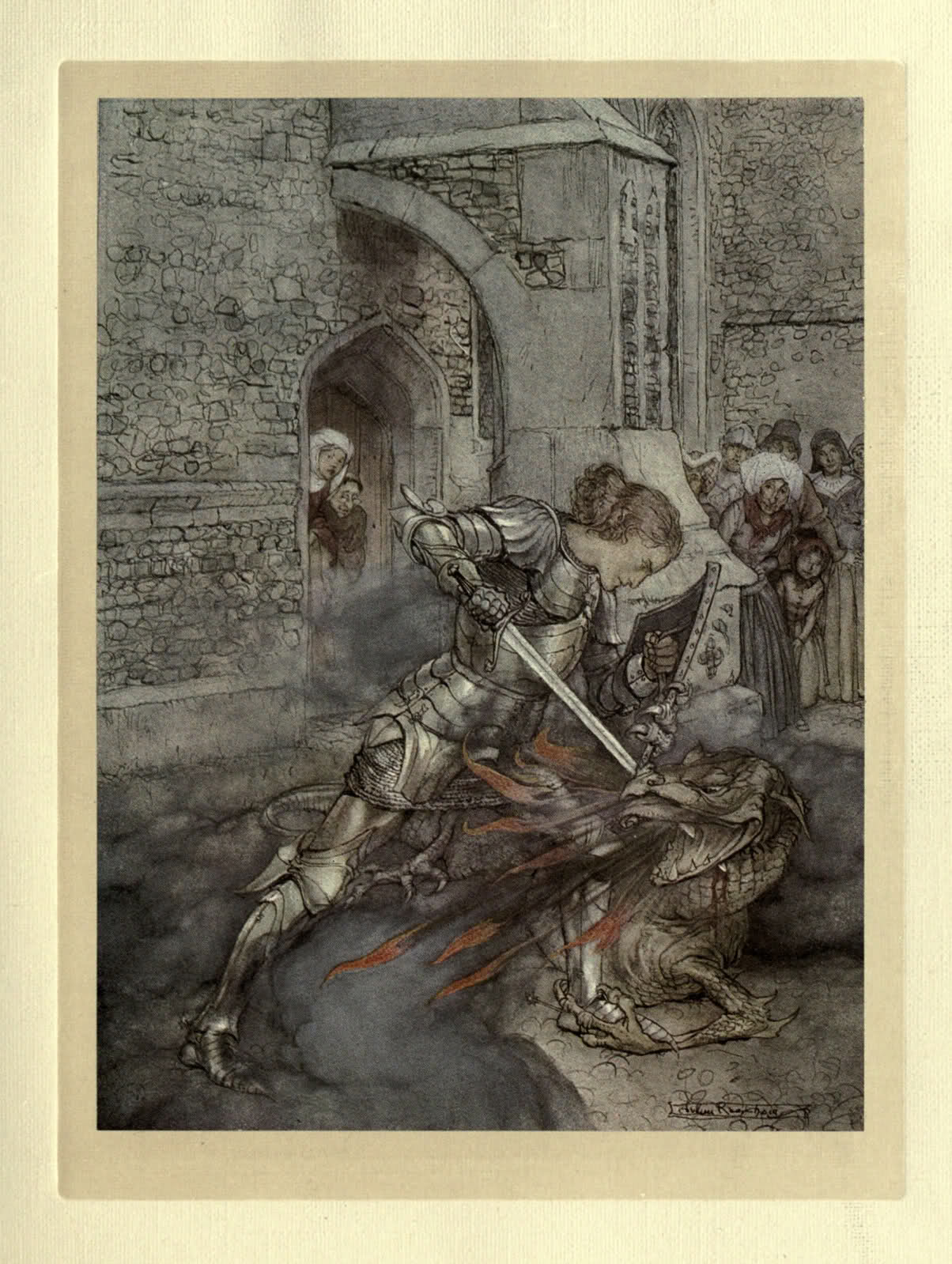 |
| ‘St. George and the Dragon’, by Arthur Rackham |
The 19th century sees a resurgence in the dragon as archeologists, historians and the stories of the “Pre Raphaelite” age are studied and adopted as acceptable subject matter, through Bullfinch, The Brother’s Grim and new translations of the classics and folklore. Throughout this period the dragon stories of the dark past are fodder for artists and writers alike. By the second half of the nineteenth century the neo-isms (Neoclassical, neo-gothic, neo-egyptian, neo-romanesque) of the beaux-arts academic style return to using the dragon as a decorative embellishment.
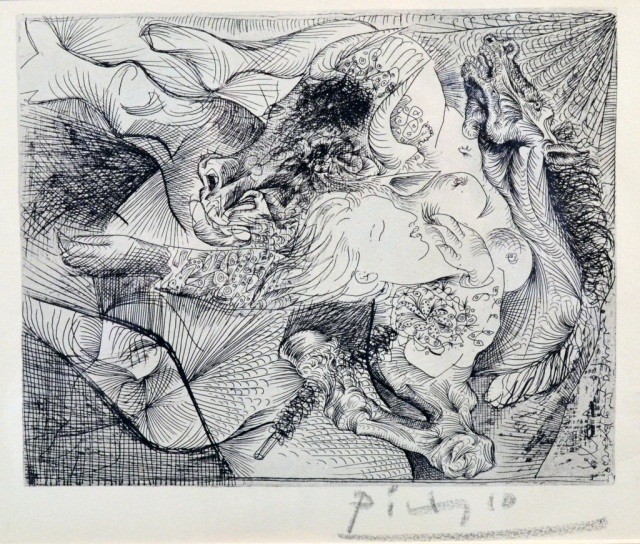 |
| ‘Woman and Dragon’, by Pablo Picasso (etching print) |
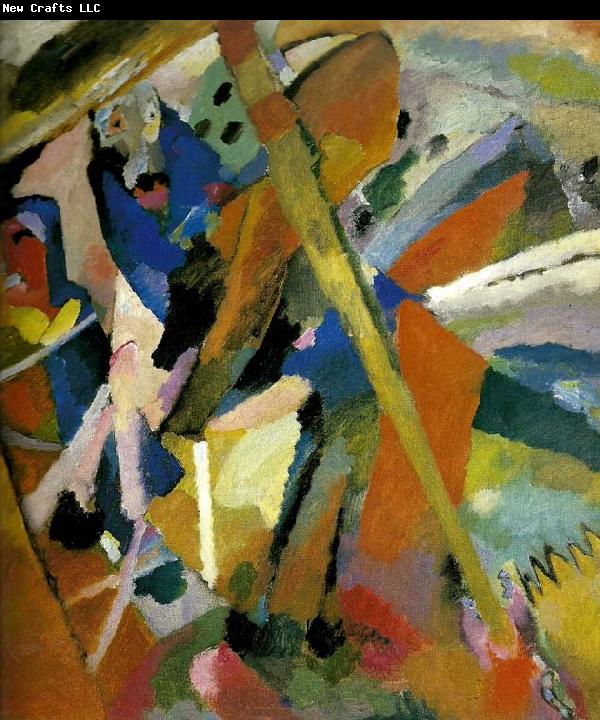 |
| ‘St. George and the Dragon’, by Wassily Kandinsky, 1911 |
With the dawn of the Industrial Age twentieth century science and technology usurps romantic notions of the arts, pushing the stories of dragons into the genre of mythology and the realm of children’s stories. Painting and literature had embraced Realism and analytical minimalism throwing off all superstitions of the past to try to make a New kind of art. Any depiction’s of dragons during this period (and there are few) become an outward representation of the artist’s inner psyche. Psychology has replaced the dragon with the Id and the Ego.
By the 1970’s, however the art world was ready to once again re-embrace spirituality, mythology and the dragon. Post-Modern artists found the writings of J.R.R. Tolkein and Joseph Campbell. The mythologies they had drawn from had a renaissance.
In 1976 TSR introduced Dungeons and Dragons to a world hungry for fantasy and monsters, becoming a popular phenomenon. McCaffery’s Dragonriders of Pern 1970, Dragonslayer 1981 were all introduced to a mesmerized audience. Since then the dragon has entered into the popular consciousness in a way not seen since the Middle Ages. Everything from Harry Potter to World of Warcraft and Skyrim have adopted the dragon as their go-to monster to inspire awe and magic.
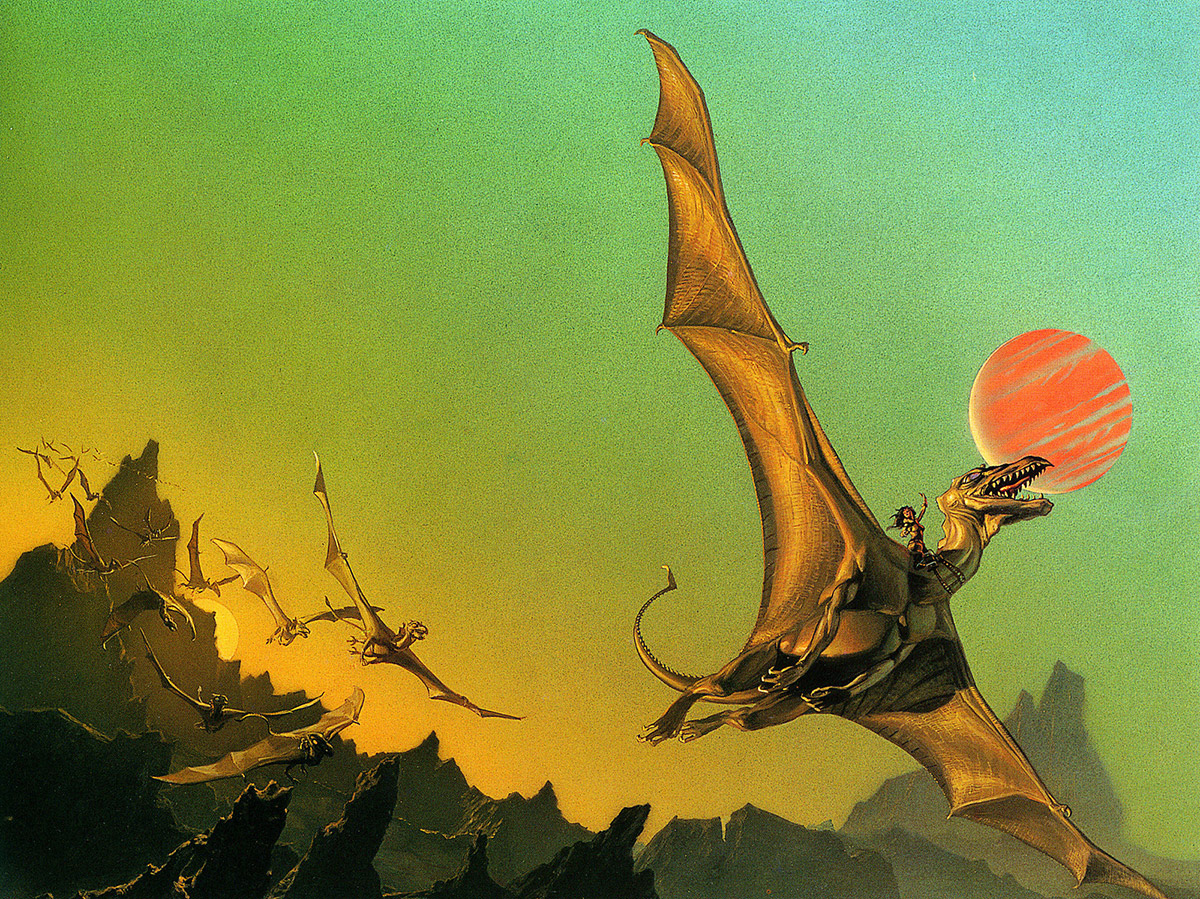 |
| ‘Dragonriders of Pern’, by Michael Whelan |
What is it about the dragon that has captivated us for all of civilization? Is it the sheer power of nature that cannot be tamed. Is it a psychological metaphor for primal fear? Is it perhaps a innate memory of our long lost primitive prehistory? Whatever the reason, in all cultures around the world the dragon , in all its forms has haunted our minds and our imaginations and will continue to do so for millennia to come!
Thank you,
William O’Connor


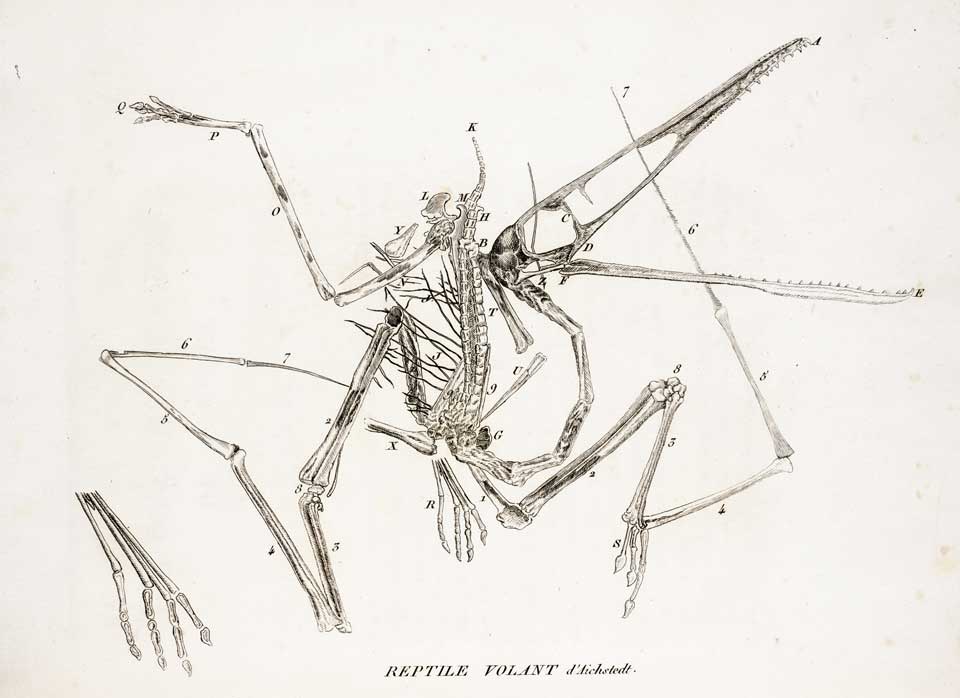
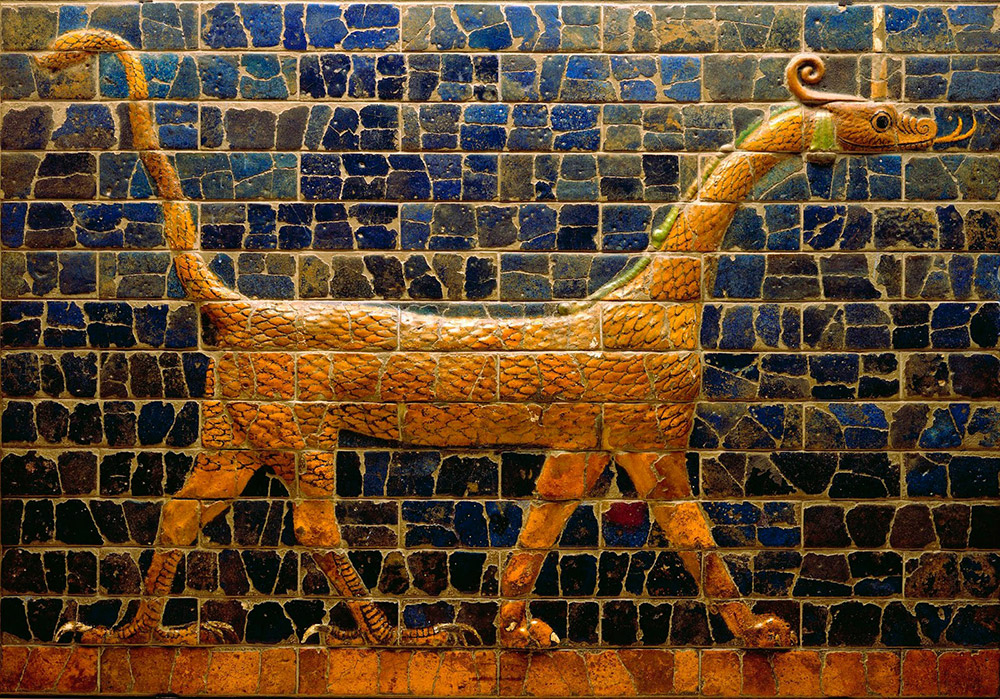
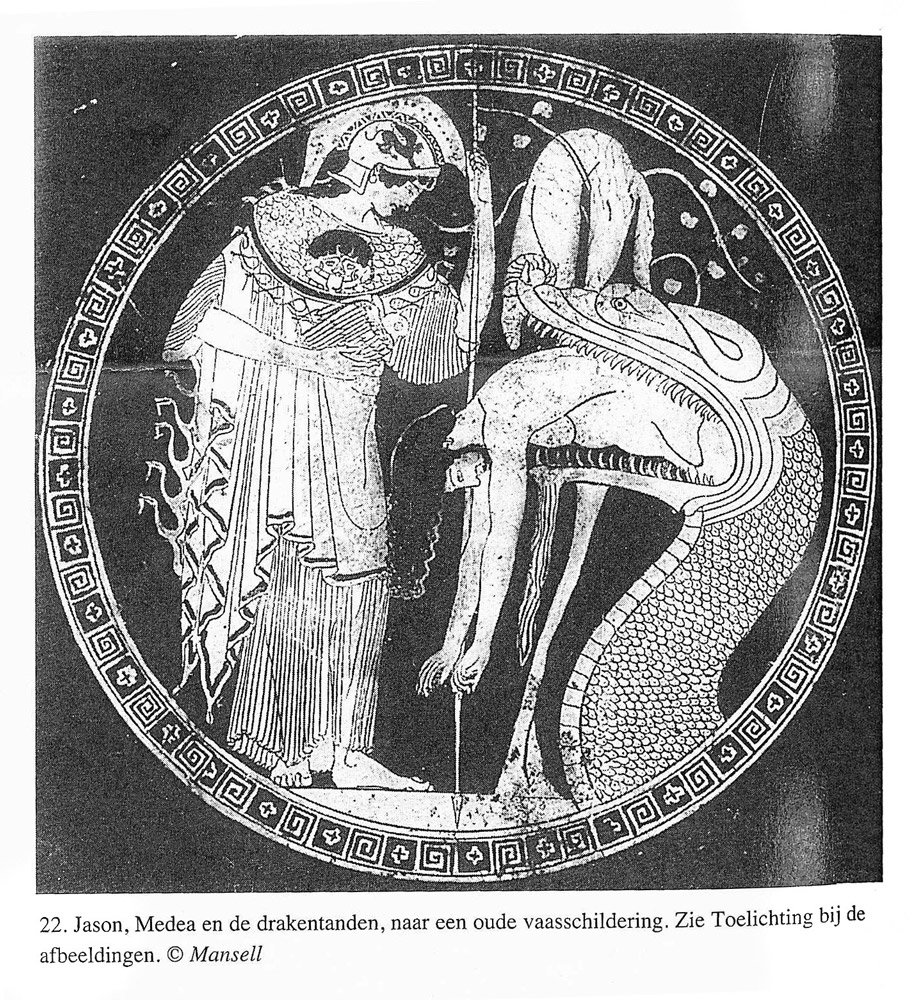
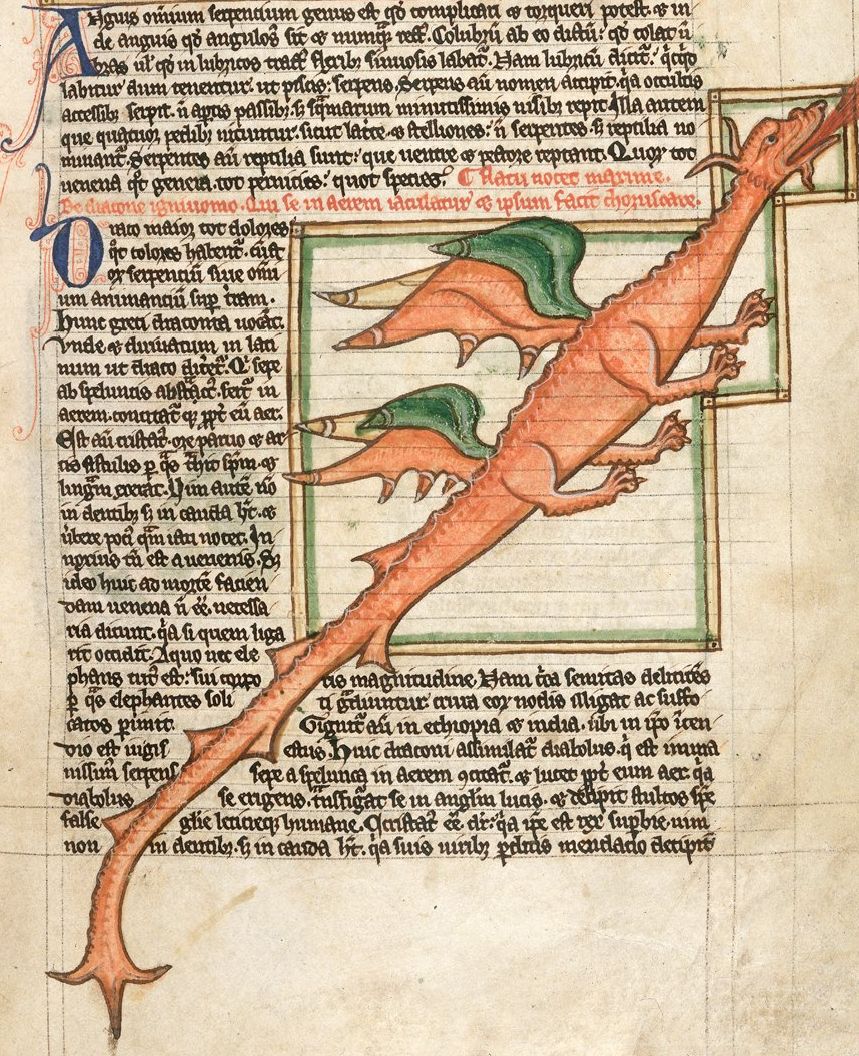

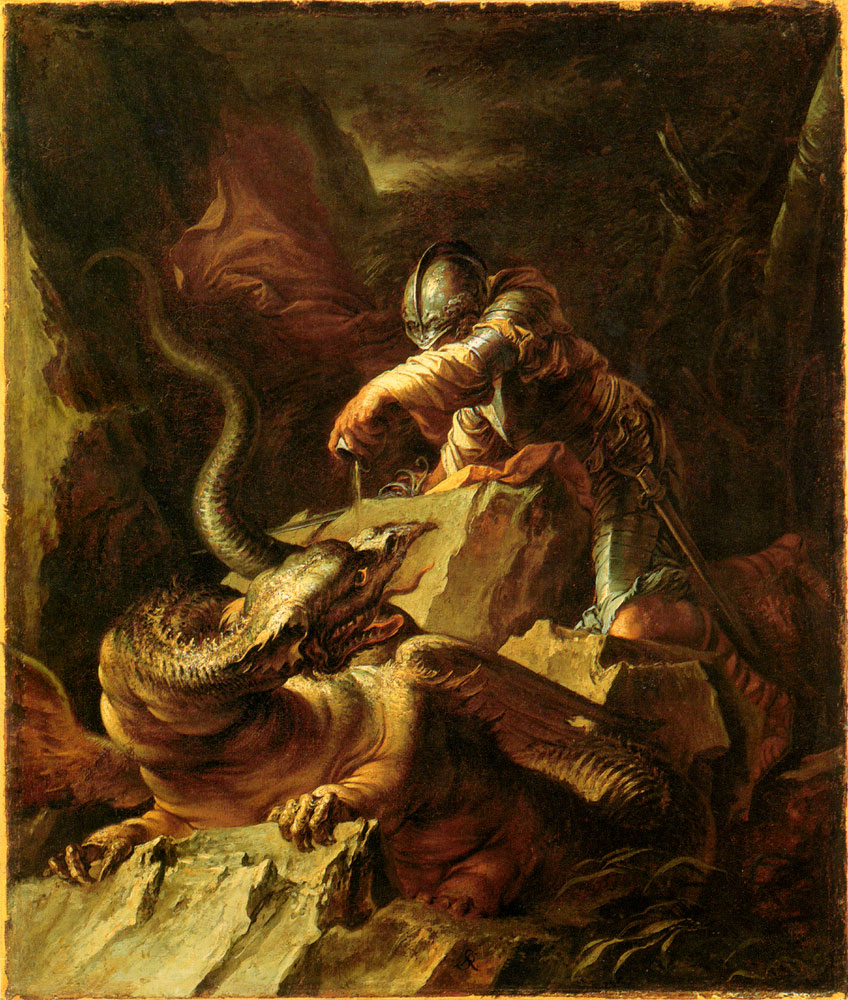
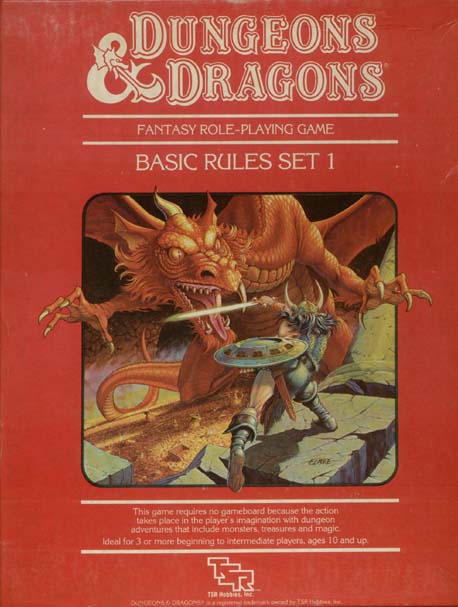
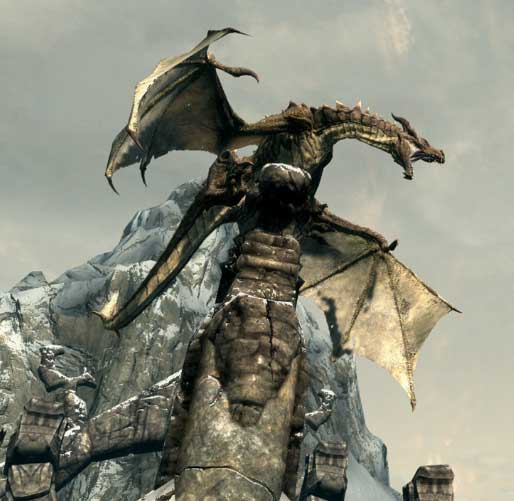
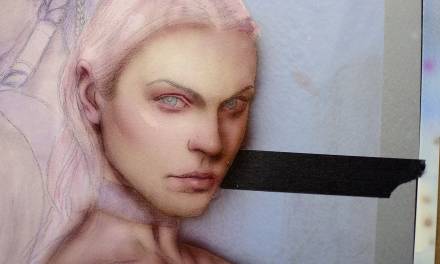
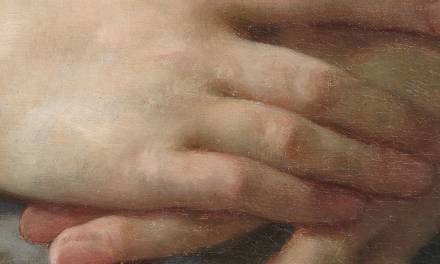
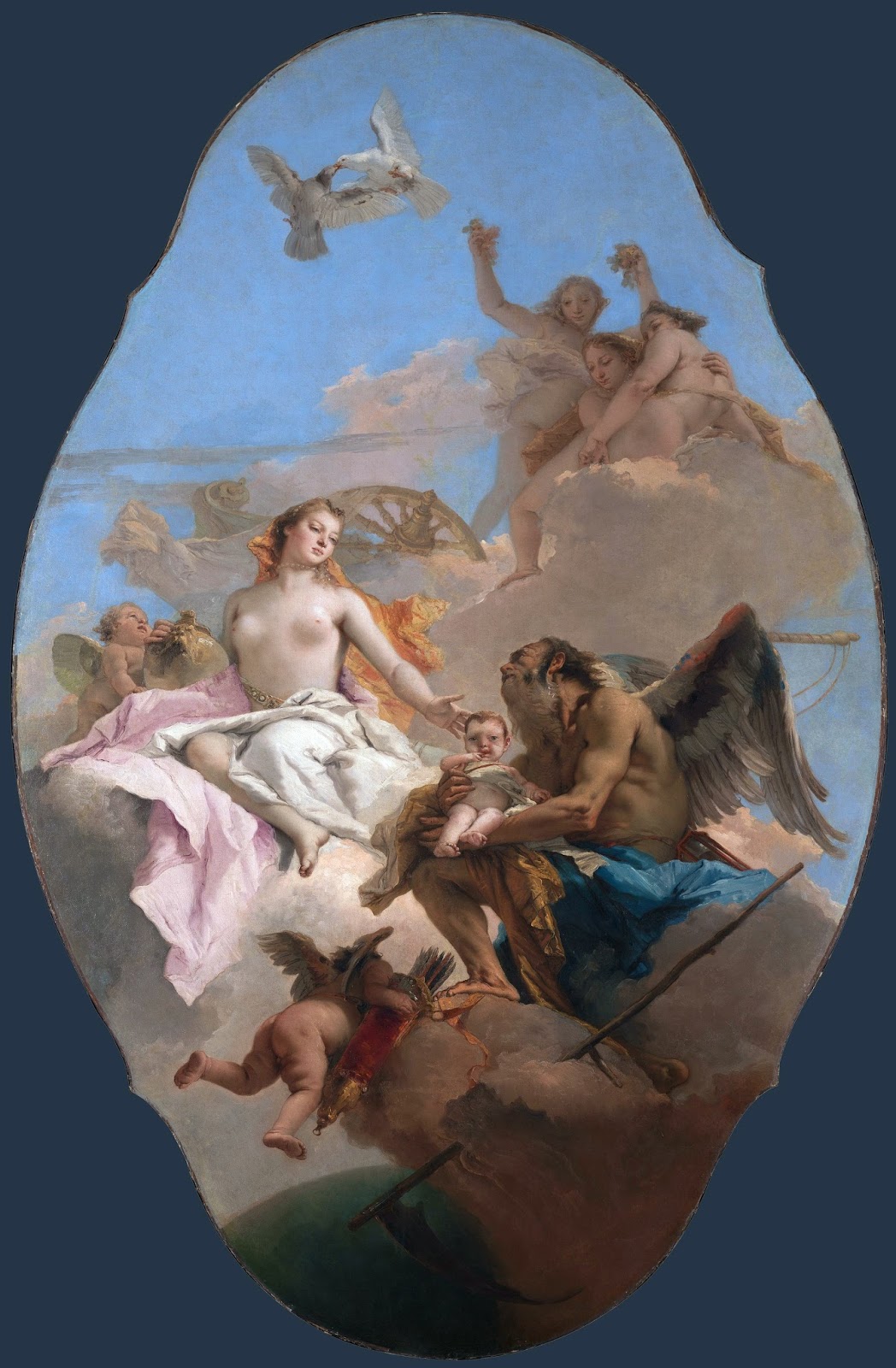
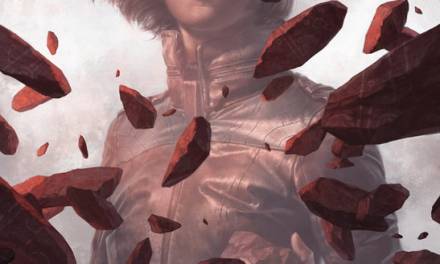
Such a nice read.
I wonder about chinese dragons now…
Thanks William O´Connor.
Thanks-
Yeah, I decided to just focus on Western dragons because the culture of the dragon in the east is very different.
WOC
I would be very interested to hear the history of Eastern dragons as well. You may have to do another post!
Great Post! Thank you. I am with Dan on a second post on the history of Eastern dragons. They are such fascinating creatures both culturally and anatomically and one my personal “time sinks”. Your focused history is much appreciated!
Really nice post, William!
Two “Western dragon” high benchmarks I'd add to your list:
The 1981 film Disney/Paramount movie Dragonslayer: As pre-CG, this film's puppetry now looks very outdated in terms of special effects, but it brought an undeniably naturalistic sense of proportion to “modern” dragons. Other films like Reign of Fire have used CG to bring these beasts into even clearer focus, but all of them owe a big nod to Phil Tippet and his posse for Vermithrax Pejorative:
http://www.thiel-a-vision.com/wp-content/uploads/2009/10/vermithrax.jpg
And any discussion of dragons in illustration would be incomplete without mention of Todd Lockwood, who's third edition D&D dragons represented a ground up rebuild of our iconic muse. Todd brought a new and natural grace to dragons through reintegration of animal anatomy and musculature. He spent a lot of time chewing into the tougher gristle in dragon physiology and solved problems people tend to hide behind a convenient wing tip. Many modern Dragon artists have reaped the benefits of the sweat Todd put into these reptilian keystones of our genre, and clearly follow his insightful lead in their own designs.
http://www.toddlockwood.com/galleries/new_art/06/musculature.shtml
http://www.toddlockwood.com/galleries/new_art/05/stormcaller.shtml
http://www.toddlockwood.com/galleries/new_art/03/temeraire.shtml
This was a great read. Thanks for posting. 🙂
Lars-
Thanks, I mentioned Dragonslayer.
Also, I agree that T. Lockwood is hugely influential, but I was hesitant to mention him as “Art History”. Thanks for the links.
Additionally, I was going to mention the influence of contemporary paleontology evolving our ideas of dinosaurs, which informs the designs of dragons….
Any body with more ideas is welcome!!
Bill
William –
Thanks for the very informative and interesting post! It's curious and fascinating to see how the dragon has evolved along with society; how our changing philosophies, ideologies, and understanding of the physical world around us has altered our mythological creatures, the dragon in particular.
I´m praying for that to happen, hehe..
What an astute observation! The history of art is the history of our beliefs. The dragon is a great representation of this evolution!
WOC
Pretty arrogant to presume you know that is where the Dragon myth came about if you ask me… Dragons are known all over the world so it is more likely that they once lived along side with man.
With absolutely nothing in the fossil record or a single scientist to support that hypothosis its pretty unlikely. but a fun idea! Its far more reasonable to assume that if you find dinosaur bones in your backyard, to make the logical conclusion that a dinosaur recently died in your backyard, and most cultures would have first been discovering these bones around the same time. Evolution, Extinction, Fossilization would not become understood until the beginning of the 20th century. Not trying to be arrogant, simply logical. Thanks for reading and joining the discussion.
Thank-you it was alot of fun!
Nicely done narrative on Dragons.
the epic of beowulf is the greatest king in the story and in his time
This is very interesting, thank you!
By the way, I own your book and I love it! 🙂
Really? Some unamed people found some bones and poof a dragon was created? GTFOH.
Very good art work